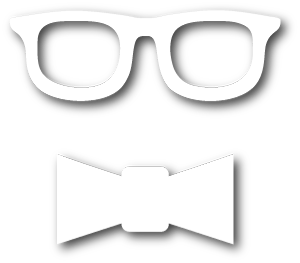Mouthful of a title, I know, but it’s been a long percolating entry. Actually, this topic was almost my paper for my Asian Aesthetics seminar, the paper that become the Kurosawa/Rashomon topic. Anyway, enough prologue, onto the actual post.
For those of you who don’t know, Shinichiro Watanabe is an anime producer/director/creator. He did two short films for The Animatrix (“A Detective Story” and “Kid’s Story”) and also the four episode/film Macross Plus (which I know nothing about), but what he is most well known for are his two anime series: Cowboy Bebop and Samurai Champloo. Two of the most critically acclaimed anime series, though maybe not as well known by the masses as Dragonball, Pokeman, or Naruto, they are quite popular with older fans who appreciate thought and character to go along with scenes of crazy fighting. The other thing that makes them different from the above mentioned series is that they are each only 26 episodes (with Bebop also having a feature film), and within those episodes, they tell a complete story of the main characters.
As a musician, though, they hold another level of interest, and that is the integration of cultural-musico aesthetics into the narrative and soundtrack. Let me explain. Both titles reference a specific type of music that not only sets the tone of the show’s soundtrack, but also informs the personalities and actions of the characters.
Bebop is story of two bounty hunters (also called ‘cowboys’) in a near future trying to scratch out a living in our solar system. Their spaceship is called the ‘Bebop’ and freewheeling lifestyle they live mirrors that of Bebop jazz in the 1940s and 50s. In the opening credits sequences, we see bits and pieces of text projected in the images. The full text reads:
“Once upon a time, in New York City in 1941… at this club open to all comers to play, night after night, at a club named “Minston’s Play House” in Harlem, they play jazz sessions competing with each other. Young jazz men with a new sense are gathering. At last they created a new genre itself. They are sick and tired of the conventional fixed style jazz. They’re eager to play jazz more freely as they wish then… in 2071 in the universe… The bounty hunters, who are gathering in the spaceship “BEBOP”, will play freely without fear of risky things. They must create new dreams and films by breaking traditional styles. The work, which becomes a new genre itself, will be called…Cowboy Bebop.”
So we have not only a declaration of the aesthetics of the characters, but show itself. And Watanabe was creating a genre busting work. Most notable for it’s integration of traditional cel animation and 3D animation, Bebop also mixed styles such as film noir, sci-fi, martial arts films (specifically Hong Kong martial arts films), gangster films, and created a new and unique work.
The soundtrack itself is not limited to ‘bebop’ jazz, but also other jazz styles (including a wonderful ballad called ‘Adieu’ that acts as sort of a memory echo to the main character’s life before), and also classical music (for a Godfather-esque opera house sequence). The episodes themselves are named for either specific works/songs (‘Sympathy for the Devil’ and ‘My Funny Valentine’) or musical styles/forms (‘Ballad of Fallen Angels’ and ‘Heavy Metal Queen’).
Samurai Champloo, on the other hand, takes its cues for hip-hop culture. Unfortunately, there is no manifesto printed in the opening credits, but we can still work things out. ‘Champloo’ here is basically a made up word that is related to the Okinawan word ‘chanpuru,’ which means ‘to mix.’ (At least according to Wikipedia, though some cursory further searching makes me trust it on this.) Essentially what we end up with here is a word meaning ‘remix’ or ‘mashup,’ which is basically what the show does. We have a story which is set in Edo period Japan (the setting of most Japanese samurai/chanbara (also spelled chambara…another possible influence on ‘Champloo’) films. But overlayed with the Edo period setting (1603-1868) are anachronistic elements of rap and hip-hop. The aural track is filled with turntable scratches and the soundtrack itself is written by Japanese hip-hop artists.
The characters themselves are three very distinct personalities that can be seen to have parallels in hip-hop styles, though I don’t know enough to truly comment extensively. Jin is the cool layed-back trained samurai fighter and is the refined one. Mugen is more forceful, quick to react, slow to think, and is angry at the world (with a troubled past). His fighting style reflects this, and almost looks like breakdancing at times. And Fuu, the young girl who brings the two men together to help her in a quest, is just bubbly school-girl age type that we see in much anime, though the character adds depth as the show progresses, and we learn about her reasons for wanting to find the “samurai who smells of sunflowers.” If anything, generally, we can see the three streams culture: the refined, the reactionary, and the commercial.
Going along with the ‘mashup’ concept, we do actually have hip-hop culture breaking into the Edo Period. We have a character in one episode rapping while a flunky accompanies him with beatbox, and graffiti/tagging among others. Part of this can be read as an extreme form of the growing Western influence in Japan in the late Edo Period (which is characterized by the shutting of Japanese ports and insulating its culture, with the exception of limited contacts and trading with Holland). A period that ended when American warships forced the fading Tokugawa Shogunate to reopen their ports to Western traders. The whole thing is much more complicated that that, but this suits fine for blogs.
To brings things to a close, here, I’ll just summarize what’s I’ve posted. In both Cowboy Bebop and Samurai Champloo, the titles themselves gives one the basic idea of the show. It gives the character types (cowboys and samurai) and the guiding musical aesthetic that also informs the characters (bebop and champloo/mashup). In this way Watanabe integrates not only musical aesthetics, but also the culture that created them into his anime series.







One thought on “The Musical Aesthetics of the Anime of Shinichiro Watanabe”